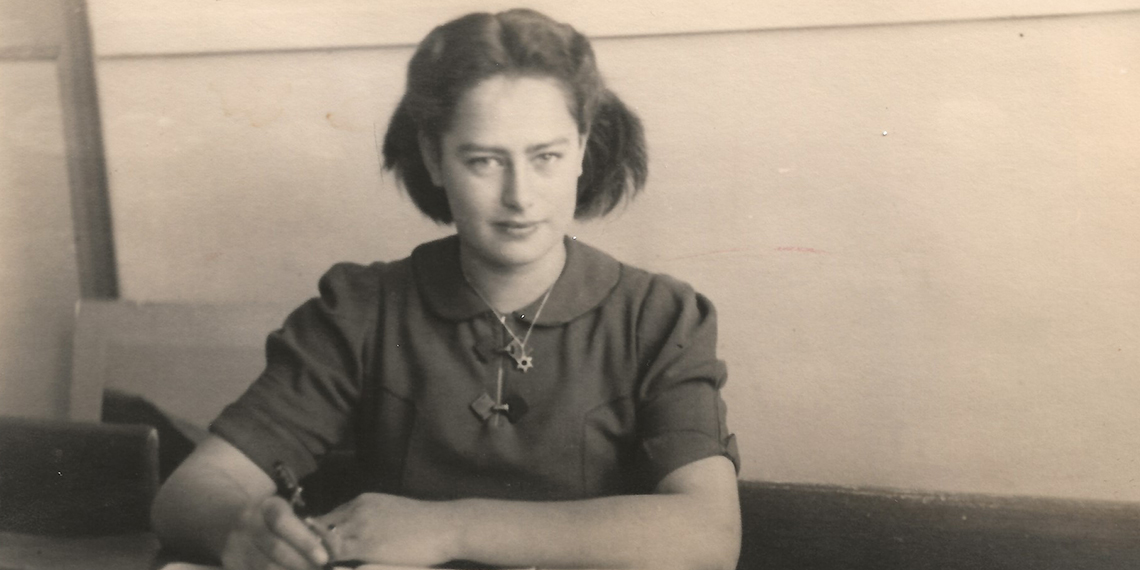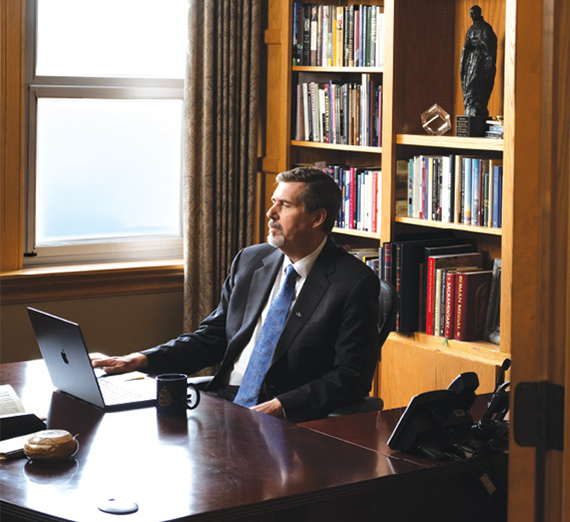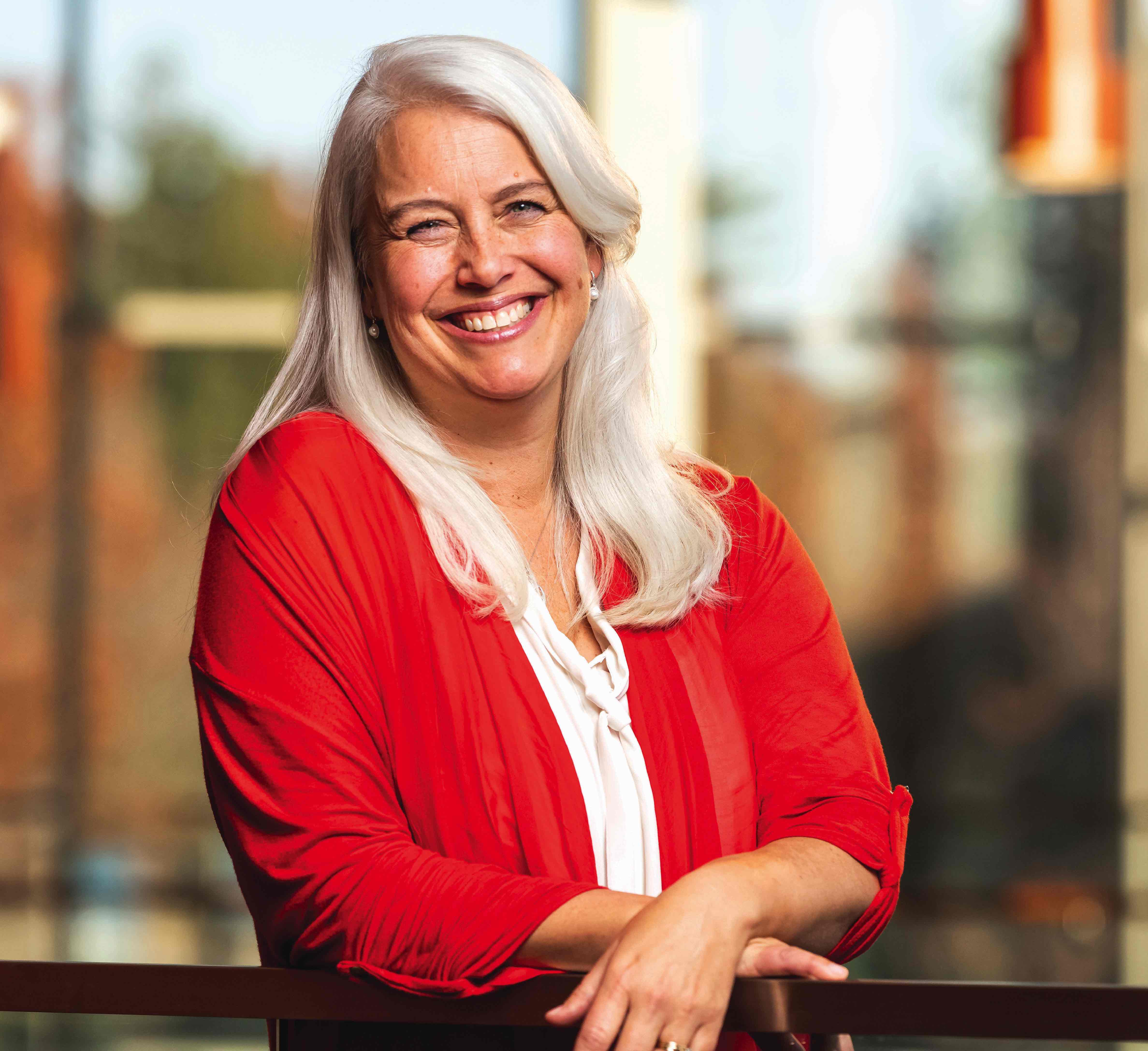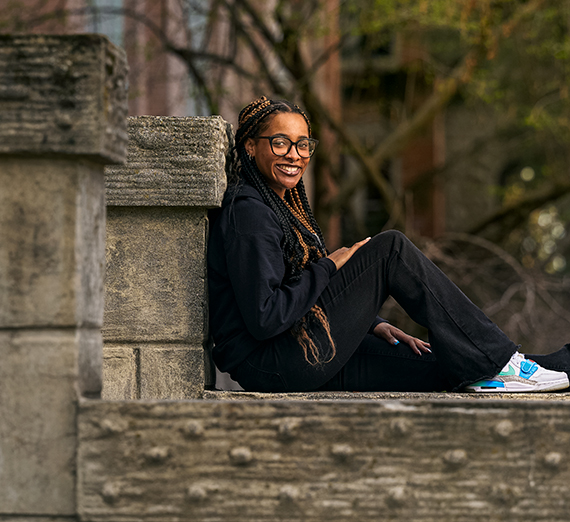Preserving the Words of a Truth Teller
Kristine Hoover and Clement Lye Capture the Story of Holocaust Survivor Carla Peperzak in New Documentary

“Hey, I have an amazing friend I want you to meet. Her name is Carla. Can you bring your camera?”
That’s how Kristine Hoover approached Clement Lye, three years ago, in hopes of preserving the story of Carla Peperzak, a 101-year-old Holocaust survivor and a Jewish member of the Dutch resistance credited with risking her life to save the lives of countless others. What followed was a massive undertaking for the pair – a multi-year project, dozens of interviews and research culminating in a 90-minute documentary called “Carla the Rescuer.”
But that wasn’t always the intention.
Their first idea was an oral history, a collection of recordings meant to preserve the voices of those with firsthand experience of historic events. Hoover, professor and chair of the Master of Arts in organizational leadership program, didn’t know exactly how they would keep Peperzak’s story alive, she just knew they had to.
“I took every bit of film gear I had,” recalls Lye, director of production and emerging media in Instructional Design and Delivery, after Hoover enlisted his help. “Every light, every camera I had, and we went to Carla’s home and interviewed her for three days.”
It didn’t stop there. After hearing everything Peperzak had to say, Lye realized they were onto something much bigger than they originally thought. So, they kept going.
“After about three months of filming, we finally took a step back and looked at everything we had,” Lye describes the moment the pieces fell into place.
“I think we have a movie here.”
Carla the Rescuer
Peperzak was born in Amsterdam in 1923. Her mother was not Jewish, but her father was, and she embraced the faith from a young age, attending synagogue and Hebrew school alongside Margot Frank, the older sister of Anne Frank. In 1940, Germany invaded the Netherlands, the same year Peperzak graduated from high school. By 1941, all Dutch Jews were required to register with the state, only to be issued identification papers marked with a “J.” Somehow, Peperzak’s father arranged for the “J” on her papers to be removed – a difference that would eventually prove vital in her resistance efforts.
Throughout the war, Peperzak risked her life securing hiding places for fellow Jews from Nazis, creating fake identification papers and ration cards and publishing an underground newspaper that documented Allied military activity.
In the end, Peperzak lost most of her extended family and countless others to the Holocaust, and for half a century after, it was simply too painful for her to talk about. That changed in 1992.
“She found, while it felt impossible to talk about, it was also impossible to forget, and not talking didn’t make that pain go away,” says Hoover. Peperzak began telling her story, first in a biography, then later at schools and events.
“She certainly doesn’t do this because it’s easy,” Hoover continues, “she does it because it’s her responsibility as a truth teller of history.”

Documenting History
Hoover and Lye recognized their own responsibilities in taking on this project. To have someone’s life story in their hands, especially one of this magnitude, meant a commitment to truth, transparency and purpose.
“This is Carla’s life, this isn’t our life,” Hoover says. “We constantly went back to her and her family and asked, ‘Are we getting this right? Are we on track?’ We wanted to honor her message in the best way we possibly could, and we felt a tremendous responsibility to check in with her wishes to see if we were telling her story the right way.”
“We can never really understand what she went through,” Lye agrees, recalling one of the most powerful moments he experienced while creating the documentary. Carla sat on a panel at a local conference, and someone asked, “What was it like to live through this?” To which she replied, “I still live this every day.”
It’s a moment included in the documentary, and one that hit Lye hard as he realized in real time what it meant for one person who has endured so much to continually go back to that place of pain. “I think about that a lot still,” he says. “She goes there to talk to us all the time, to talk to schools and kids. She goes back to that place and gives us her heart.”
“That’s how we eventually settled on a 90-minute film,” Hoover says, because Peperzak’s vision was for as many people as possible to know her story. She credits Clement’s genuine commitment, terrific talent and unyielding vision for bringing the story to the big screen. The plan now is for the documentary to play at schools, at seminars, local events and film festivals. “Carla the Rescuer” recently premiered at the Spokane Jewish Film Festival with two sold-out showings and a few words from Peperzak herself. It will make another debut at the Seattle Jewish Film Festival, March 22 through April 6.
The team is also working with a Pittsburgh-based company called Teen Screen to make the film free and accessible for teachers and professors across the country.
“Our efforts will always go back to Carla’s vision,” says Hoover.
How to Win Against Hate
What is the message to be remembered in Peperzak’s story? You’ll have to watch “Carla the Rescuer” for an in-depth explanation, but Hoover says, “Fundamentally, it’s a message to stand up to hate and an invitation for each of us to be more respectful, more tolerant and, overall, to be kind.”
“Carla doesn’t just warn us about what happened during the Holocaust,” Lye says, “Her message is timeless, but also timely, given the various avenues of turmoil we are likely going to see this year. Hatred is out there, but she’s trying to tell us how to win against hate through love and respect.”
The past three years impacted both Hoover and Lye in many ways.
For Lye, it’s been a wakeup call: “You live your life and think you don’t affect other people. You don’t think you can make a real difference. And then you meet somebody who stood up, put her life in danger and continues to do so, and she tells you that you can make a difference.”
“I hope everyone has a chance to know someone like Carla,” says Hoover, who counts herself lucky to have spent so much time with someone she says, “truly exudes warmth, care and a commitment to human dignity. She is one of the best examples I have ever known of someone who, decade after decade, continues to want to make the world a better place.”
The Sapling Project
From her only window to the outside world, Anne Frank could see a majestic chestnut tree. Since 2009, the Anne Frank Center has worked alongside the Anne Frank House to preserve the original chestnut tree by gathering and germinating chestnuts and donating the saplings to organizations dedicated to honoring Anne Frank’s memory. On her 101st birthday, Peperzak learned that one of only 18 saplings will be planted at Peperzak Middle School in Spokane in June 2025. “It’s very hard to surprise someone who has seen so much of the world,” Hoover says. “But that moment deeply, deeply touched her."
- Spirit




